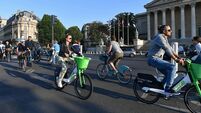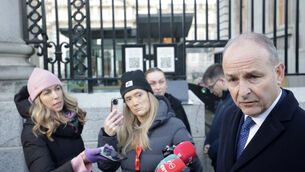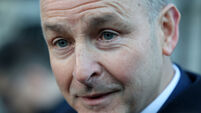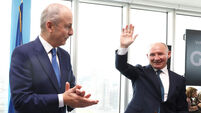Pontiff’s style council
True to form, he tirelessly advocates (and tweets) conservative Catholic values. His speeches raise few eyebrows but he still manages to turn heads with his colourful vestments and snazzy accessories. Don’t call him a fashion plate, though. Pope Benedict looks to the Vatican’s sartorial archives when commissioning his clothes.
Almost everything a pope wears is symbolic but after Vatican II the papal regalia were toned down. The General Instruction of the Rome Missal was that the beauty of the chasuble (the long outer vestment worn for the celebration of the Eucharist) “should come from drapery and form, rather than elaborate decoration,” and many accoutrements were simplified or fell into disuse. In keeping with his old-school theology, Pope Benedict has revived several garments that haven’t been worn for over half a century. This goes some way to explaining the bemused media response to his more colourful choices.
Take the camauro, a fur-trimmed velvet hat that His Holiness wore in Dec 2005. The festive red velvet drew confused comparisons to Santa Claus. The US-based Anti-Fur Society was outraged by the real ermine trim. This style dates from the 12th century when it was used to keep tonsured heads warm. Before Pope Benedict’s Christmas outing, no pontiff had sported one since 1963 (Pope John XXIII was buried with his). A camauro is the winter version of a zucchetto, the silk skullcap more commonly associated with the pope. Both styles are a symbol of God’s presence and that the wearer is a servant of God. “I was just cold and I happen to have a sensitive head,” Benedict told German journalist Peter Seewald a year later. “I haven’t put it on again since, in order to forestall over-interpretation.”
The saturno (so called because its wide brim and rounded crown resemble Saturn) that protected his head from the Roman sun in Sep 2006 was widely mistaken for a cowboy hat. It serves no ceremonial purpose, much like the white baseball cap he wears in the garden of his summer residence outside Rome. A red saturno with gold cords has been a part of the papal wardrobe since the 14th century. Pope John XXIII was particularly fond of this style, wearing it regularly between 1958 and 1963. Pope John Paul II occasionally wore the same hat early in his pontificate before it fell into disuse.
Pope Benedict favours taller pointed mitres than his predecessor. Depending on the calendar, he wears a bejewelled precious mitre, an embroidered golden mitre or a simple white mitre. He has also broken with modern tradition and replaced the image of the three-tiered tiara that traditionally appeared atop the papal coat of arms with the pointed mitre.
To reinforce papal continuity, His Holiness has revived traditional versions of liturgical vestments. These include the pallium, a woollen band popes have worn over vestments since the first millennium. Benedict has spoken frequently of its importance as a symbol of the cross that Christ carried and the sign of “a bond that protects the Church from evil”. His predecessors wore a shorter, smaller take on the garment. He has worn both the elaborate ancient style and a silk-trimmed version decorated with five crosses, three of which are pierced with pins. The embellishments symbolise Christ’s five wounds and the three nails.
Benedict wears the mozzetta, a capelet-style wrap, for the full 50 days of the Easter to emphasise the season’s solemnity and importance to Christianity. He has five different styles fashioned from silk, velvet and ermine. Traditionally, a mozzetta is only worn for the first eight days of Easter. The garment was last worn by Pope Paul VI.
His revival of the papal shoes, which had not been used since early in the pontificate of Pope John Paul II, ignited speculation that the Pope wore Prada in 2007. The Milanese fashion house made no comment on the red leather shoes. The Vatican’s own newspaper, L’Osservatore Romano, dismissed the story as false, attributing them to Adriano Stefanelli, the Pope’s personal cobbler.
“Such rumours are inconsistent with the simple and sombre man who, on the day of his election to the papacy, showed to the faithful gathered in St. Peter’s Square and to the whole world the sleeves of a modest black sweater,” it said.
The leather shoes are similar in style to Prada slides and it’s not unfeasible that Benedict inspired the designer. It wouldn’t be the first time the Vatican influenced fashion. Jean-Charles de Castelbajac created vestments with a multi-coloured cross motif for Pope John Paul II’s 1997 visit to Paris.
“I always thought creating was linked to suffering, but the Pope showed me that wasn’t true and he changed my life,” the avant-garde designer told Dazed Digital. “From that point on I saw myself as a fashion designer. He said ‘Young man, you have used colour as a cement of faith.’” Donatella Versace has said she’s inspired by the “elegant austerity” of Pope Benedict’s personal secretary, Monsignor George Gänswein.
An endorsement from the pope is eminently stronger than that of any celebrity or politician. Of course, it would be entirely inappropriate for him to actively engage in such matters. He does not shop for clothes and is dressed by Gammarelli, a Rome-based family of clerical tailors (if you fancy a pair of the Pope’s socks, they sell them online at www.meschaussettesrouges.com). All a brand can do is donate products to the Vatican as gifts and hope that he looks favourably upon them.
An anonymous Vatican official tells the Wall Street Journal that “he’s aware of the buzz, but mostly he laughs about it, because it’s so absurd. What does he really have to choose? He doesn’t wear a tie or coat. The glasses he wears are the same glasses he wore as a cardinal, as is the pen he writes with”. In fact, he has been spotted in sunglasses from both Gucci and, less glamorously, Bushnell Performance Optics. He also wears Geox Uomo Light loafers. The ventilated-rubber shoes are a comfortable choice for summer. None of these brands have made a point of promoting their association with the pontiff. It would be tasteless to do as where the pope doesn’t dress for symbolism, his choices are purely practical.
Spanish novelist Jose Manuel de Prada wrote in L’Osservatore Romano that “the Pope does not wear Prada [...] but Christ.” For the man who acted as theological consultant at Vatican II, everything that is misinterpreted as a fashion statement is an attempt to reinforce Catholic liturgy. The staff of Esquire magazine surely meant to complement Pope Benedict when, in 2007, they named him Accessoriser of the Year, but one can’t help but think they’re missing his point.















